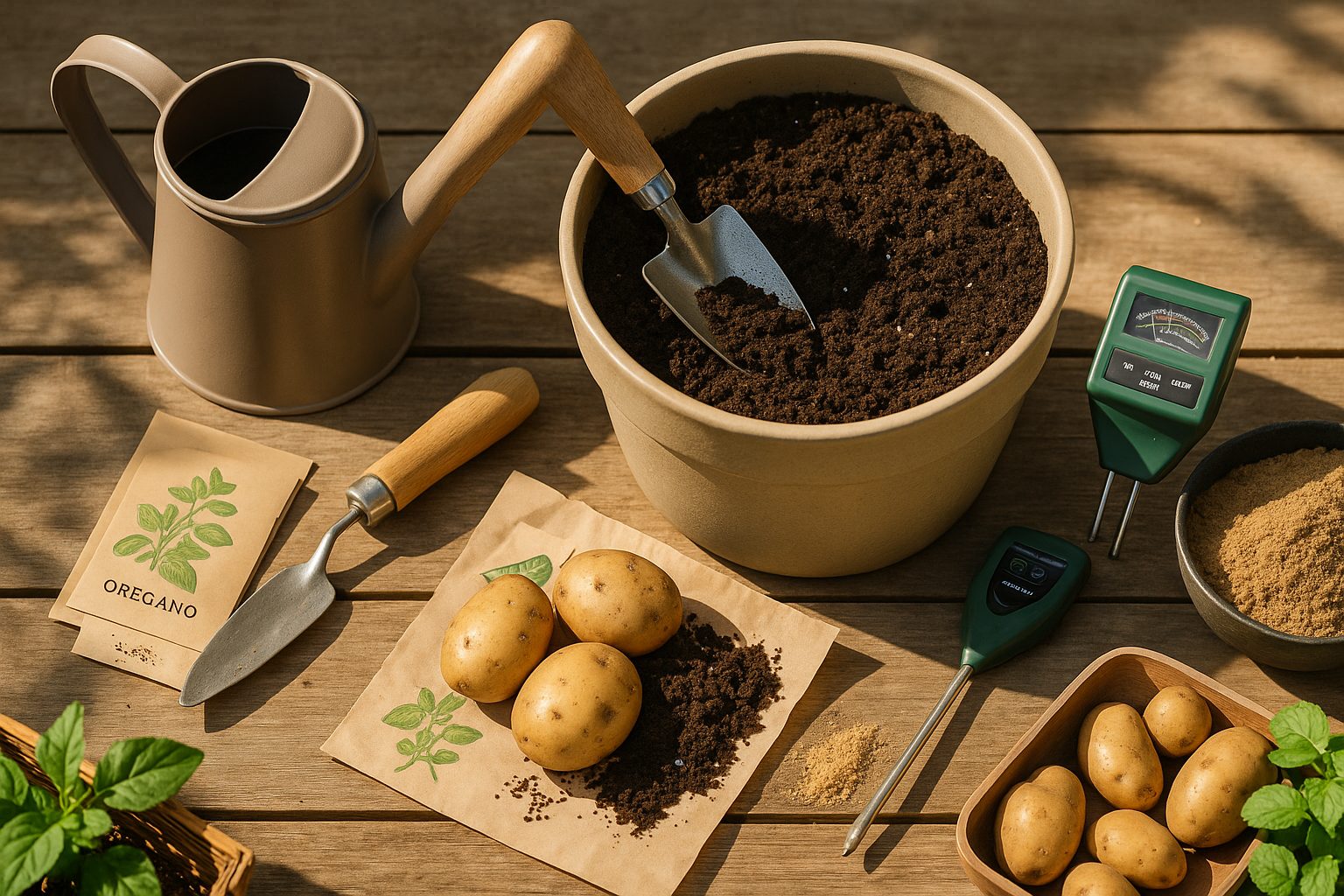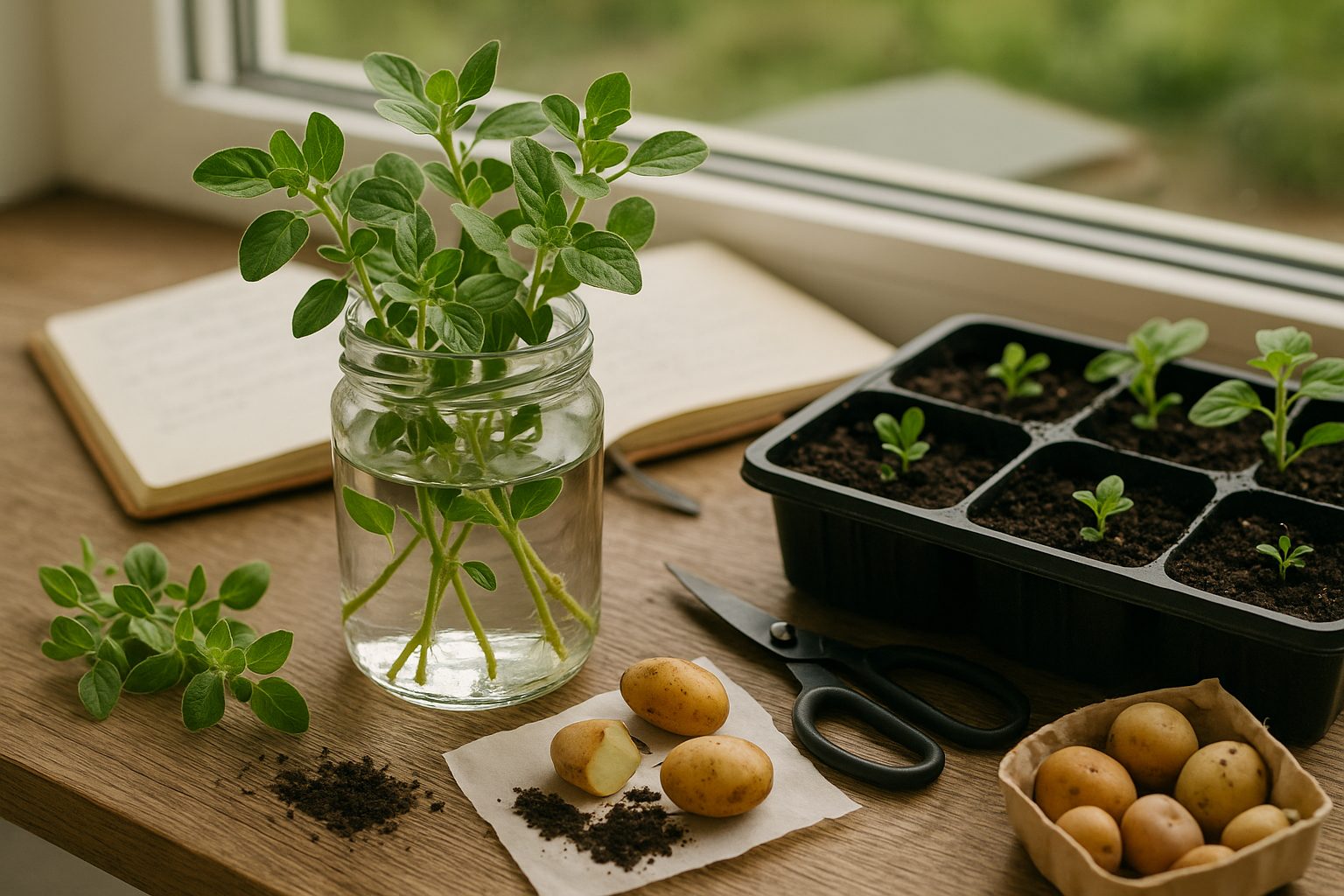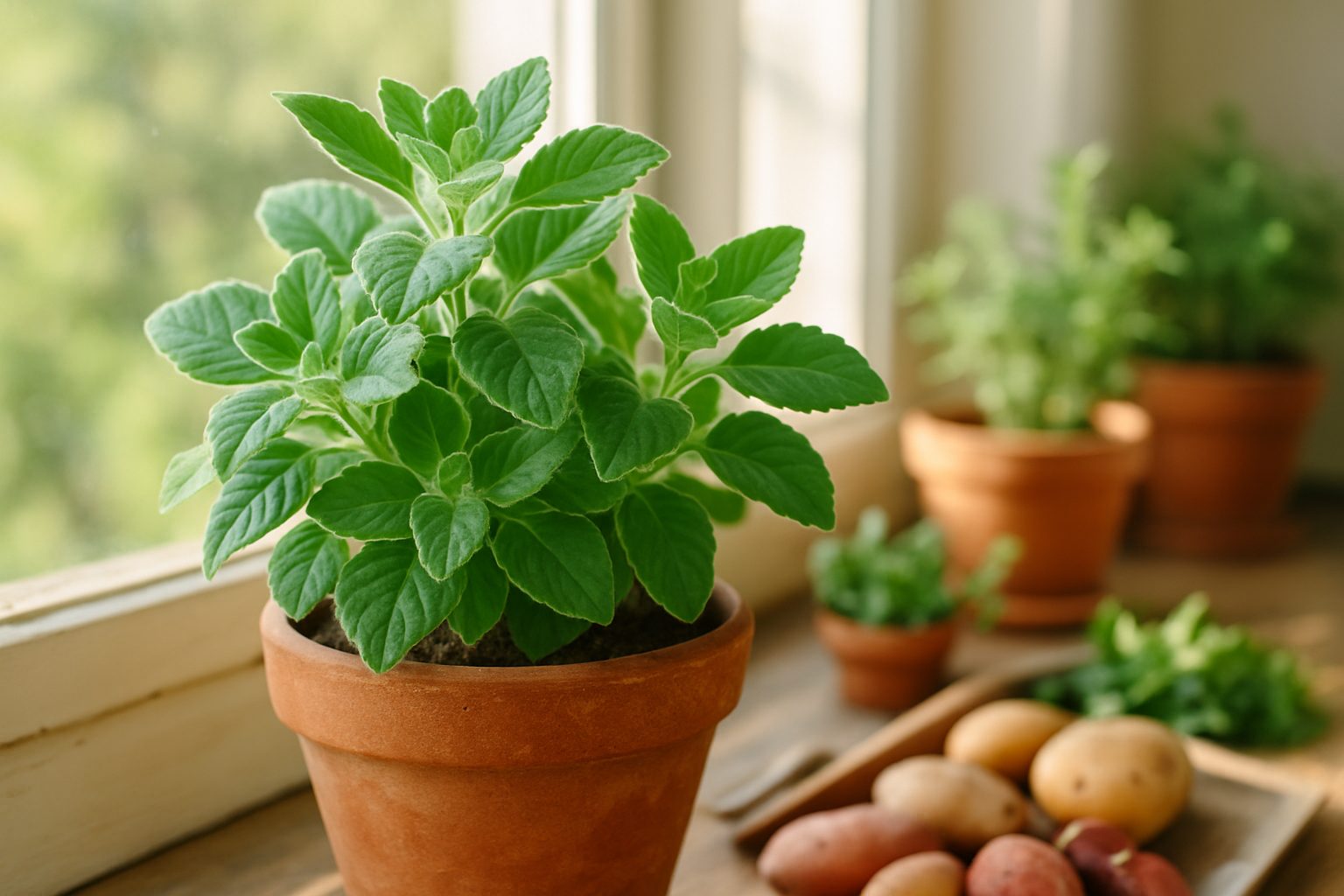Introduction
Growing Mexican oregano indoors is quickly becoming a popular trend among home cooks and plant enthusiasts who want fresh, aromatic leaves at their fingertips year-round. Known for its bold, citrusy flavor, Mexican oregano is a staple in Latin American and Tex-Mex dishes, adding depth to everything from chili to grilled meats. While many people think of herbs like basil or mint for their windowsills, Mexican oregano offers a unique twist—and having it fresh means your recipes reach a whole new level.
There are plenty of benefits to nurturing herbs at home. For starters, indoor herbs are always within easy reach, saving those last-minute trips to the store. They also thrive in controlled environments, making them less susceptible to pests and unpredictable weather. Plus, caring for indoor plants can be a satisfying hobby that boosts your mood and brightens up your kitchen space.
But is it realistic to bring a sun-loving herb like Mexican oregano indoors and expect it to flourish? Can you provide the right conditions to make your efforts worthwhile, or is it better left to the garden? Let’s explore whether growing Mexican oregano indoors is a flavorful project worth trying.
What Makes Mexican Oregano Unique?
Mexican oregano (Lippia graveolens) differs significantly from the more common Mediterranean oregano (Origanum vulgare) in several key ways. Although both are called “oregano,” they belong to different botanical families—Mexican oregano is part of the Verbenaceae family, while Mediterranean oregano belongs to the mint family, Lamiaceae. One of the most noticeable differences is their flavor profiles. Mexican oregano offers a robust, citrusy, and slightly peppery taste, often with hints of lemon and mild licorice. This makes it a staple in Mexican and Latin American kitchens, enhancing dishes like pozole, enchiladas, carnitas, and various salsas and marinades.
Its bold flavor holds up well against the heat and spices typical of these cuisines, making it an excellent seasoning for recipes that require complexity and depth. Mexican oregano also varies in appearance and growth habits. The plant has small, aromatic leaves and produces tiny white or pale yellow flowers. Naturally thriving in the warm, dry climates of Mexico and the southwestern United States, it is drought-resistant and prefers well-draining soil.
These traits also make growing Mexican oregano indoors an appealing choice for home cooks who want authentic Latin flavors year-round. Indoor growers benefit from the plant’s relatively low maintenance—it requires basic care and plenty of sunlight, making it easier to cultivate than Mediterranean oregano.
Ideal Indoor Growing Conditions for Mexican Oregano

Growing Mexican oregano indoors is totally doable with the right setup. Knowing its native environment helps you create the perfect conditions. Light is key: Mexican oregano needs at least six hours of direct sunlight each day, so pick a bright south- or west-facing windowsill if you can. If natural light is limited, use a full-spectrum LED grow light positioned just a few inches above the plant. Without enough light, the plant can get leggy and weak, so keep an eye on it.
Temperature matters too—this herb likes it between 65°F and 80°F, mimicking its warm, subtropical roots. Keep it away from drafts, air conditioners, or heaters since sudden temperature changes or cold air can stress the plant. Humidity should be moderate. Mexican oregano tolerates dry indoor air better than many herbs, but too much humidity can lead to fungal problems. Good airflow helps prevent mold and mildew, so consider placing a small fan nearby or opening windows occasionally, especially in stuffy rooms.
A kitchen with a sunny window often works great because it gets warmth, light, and fresh air regularly. Just avoid spots near sinks where splashes or soggy soil could be an issue. Living rooms or sunrooms also work well if they meet the light and temperature needs. Avoid cramped corners or places near heavy curtains that block light and trap humidity. Whether you have a cozy apartment or a roomy house, setting up your Mexican oregano indoors with these tips will help it grow strong and flavorful all year long.
Planting and Potting Mexican Oregano Indoors

To start growing Mexican oregano indoors, you can use either seeds or cuttings. If starting from seeds, lightly press them into a seed-starting mix and keep the soil warm (around 70°F) and consistently moist until they sprout, which usually takes two to three weeks. A sunny windowsill or grow light helps encourage healthy growth.
For cuttings, snip a 4- to 6-inch piece from a mature plant, remove the lower leaves, and place the stem in water until roots develop, typically within two weeks. Once strong roots appear, transplant the cutting into its own pot.
Choose a container with drainage holes since Mexican oregano dislikes soggy roots. Use a well-draining potting soil blend—such as cactus mix or standard potting soil combined with perlite or coarse sand. Start with a small pot, about 6 to 8 inches in diameter, to prevent overwatering and encourage root development.
As your plant grows and roots fill the pot, move it to a larger container—one or two inches bigger in diameter—giving it room to thrive without becoming rootbound. Use clay pots for extra breathability and place the pot on a saucer to catch excess water.
Position your oregano where it gets at least six hours of indirect sunlight daily, and rotate the pot occasionally for even growth. If you’re growing multiple plants indoors, space them at least 12 inches apart to ensure good air circulation, which helps keep them healthy and prevents fungal problems.
Repot your Mexican oregano annually or whenever you see roots emerging from the bottom of the pot to give it enough space to expand and flourish.
Caring for Mexican Oregano Indoors
When growing Mexican oregano indoors, proper care is key to keeping your plant vibrant and productive. This herb prefers its soil to dry out between waterings, so wait until the top inch feels dry before watering again. Use a well-draining potting mix—yellowing leaves or soggy soil often indicate overwatering, which can lead to root rot. On the other hand, drooping or crispy leaves may signal underwatering.
To maintain its health and flavor, feed your Mexican oregano with a balanced, water-soluble fertilizer every 4-6 weeks during the active growing season (spring and summer). Avoid over-fertilizing, as this can cause weak, overly lush growth with less flavor; always dilute the fertilizer to half-strength.
For pest prevention, check regularly for common indoor pests like aphids and spider mites. Tiny webs or sticky residue are red flags. If pests appear, remove them by spraying with water or gently wiping leaves with a damp cloth. For stubborn infestations, neem oil is a good natural option.
Regular pruning is essential: pinch or snip back new growth just above a leaf node to encourage fuller, bushier plants and prevent legginess. This not only shapes the plant but also provides fresh leaves for cooking. Harvest by taking a few sprigs at a time once the plant reaches at least six inches tall. Never remove more than one-third of the plant at once to ensure it remains healthy and lush.
With this mindful routine—watering only when needed, feeding sparingly, monitoring for pests, and consistent pruning—you’ll enjoy a robust and aromatic supply of Mexican oregano right from your indoor garden.
Common Challenges and How to Overcome Them
Growing Mexican oregano indoors can be a rewarding experience, but it does come with its own challenges. One of the biggest hurdles is providing enough light, as Mexican oregano thrives with at least six hours of direct sunlight daily. If your windowsills don’t get that much sun, consider setting up a small grow light to supplement natural light—LED full-spectrum bulbs work especially well for herbs.
Another common issue is poor drainage and overwatering, which can lead to root rot. Always use well-draining soil, choose containers with drainage holes, and allow the soil to dry out slightly between waterings. Indoor plants can also attract pests like spider mites or aphids. Check your oregano regularly for tiny webs or sticky leaves, and if needed, gently wash the foliage with soapy water or apply an organic neem oil spray.
Slow growth often results from cramped roots or nutrient-poor soil. Repot your plant every year or two, selecting a slightly larger container, and feed it with a balanced liquid fertilizer once a month during the growing season. Finally, if your indoor setup isn’t quite working—if the plant is leggy, dropping leaves, or simply not thriving—consider moving it outdoors when temperatures consistently stay above 55°F (13°C). Outdoors, Mexican oregano is more likely to flourish, especially in a sunny spot with well-drained soil, so don’t hesitate to give it a change of scenery if needed.
“`html
Enjoying and Using Your Indoor Mexican Oregano
Growing Mexican oregano indoors opens up a world of culinary possibilities right from your kitchen windowsill. Freshly snipped leaves are perfect for flavoring traditional dishes like tacos, enchiladas, or pozole. But don’t stop there—try adding them to homemade salsas, salad dressings, or even infusing oils and vinegars for a unique twist.
Mexican oregano’s citrusy, peppery notes can elevate grilled meats and roasted vegetables, or be sprinkled over soups and stews for a burst of aroma and taste. If your plant produces an abundance of leaves, simply cut stems and hang them upside down in a dry, airy spot until crisp. Then crumble and store the leaves in airtight jars; this way, you’ll have your own seasoning blend year-round.
You can also freeze chopped leaves in ice cube trays with a bit of olive oil, making it easy to toss flavor into dishes at a moment’s notice. Don’t be afraid to experiment—try substituting Mexican oregano for regular oregano in your favorite Mediterranean recipes or blend it into spice rubs for a new flavor profile.
Most importantly, share your favorite uses and growing tips online. Connecting with other indoor gardeners can spark creativity and help everyone get more enjoyment from their indoor herb gardens.
“`
